Phyllis Bramson: Reimagining Imagism's Chicago Legacy

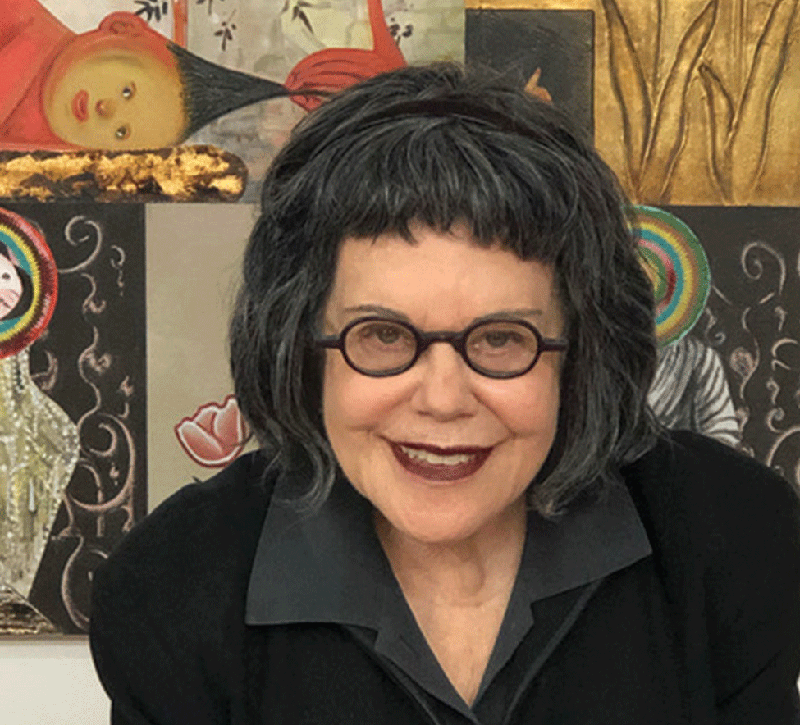
By ALISON REILLY
Phyllis Bramson is a veteran of the Chicago art scene, an accomplished arts educator, and a damn good painter. A self-described child of the 1940s and 50s, Bramson’s parents were avid collectors of Asian and erotic art, which greatly influenced her aesthetic vocabulary. This September, she has three exhibitions opening respectively at Zolla/Lieberman Gallery, Elmhurst Art Museum, and The Suburban, which speaks to the depth of her connections to the city and her continued influence on contemporary art. Recently, I had the opportunity to ask her about her studio practice, her definition of Chicago Imagism, and her painting techniques. Bramson also reflected on her relationship with the late Jim Yood, the beloved Chicago art critic and writer. Below is an edited transcript of our conversation.
Chicago Gallery News: What is your studio like?
Phyllis Bramson: My studio is located in Greektown in Chicago, where I live during the week. It is not far away from downtown. I love urban life, access to galleries, and the School of the Art Institute (where I now advise graduate students). Before that, I taught for 23 years at the University of Illinois, Chicago, in their studio arts program. When I was there I just walked through an alley, because the building I taught in butted up against the building I still live in!
CGN: How would you describe the pace that you work at in your studio? What is a typical day like?
PB: I am essentially in my studio six days a week.
A typical day is not a typical day. I don’t often know what is going to happen in a given day. A certain email, for example, can change everything, and that has been happening lately. Right now I have a lot to do, so I feel like I am constantly trying to play catch up with my work, and most important, there is a personal demand that I constantly progress with my practice.
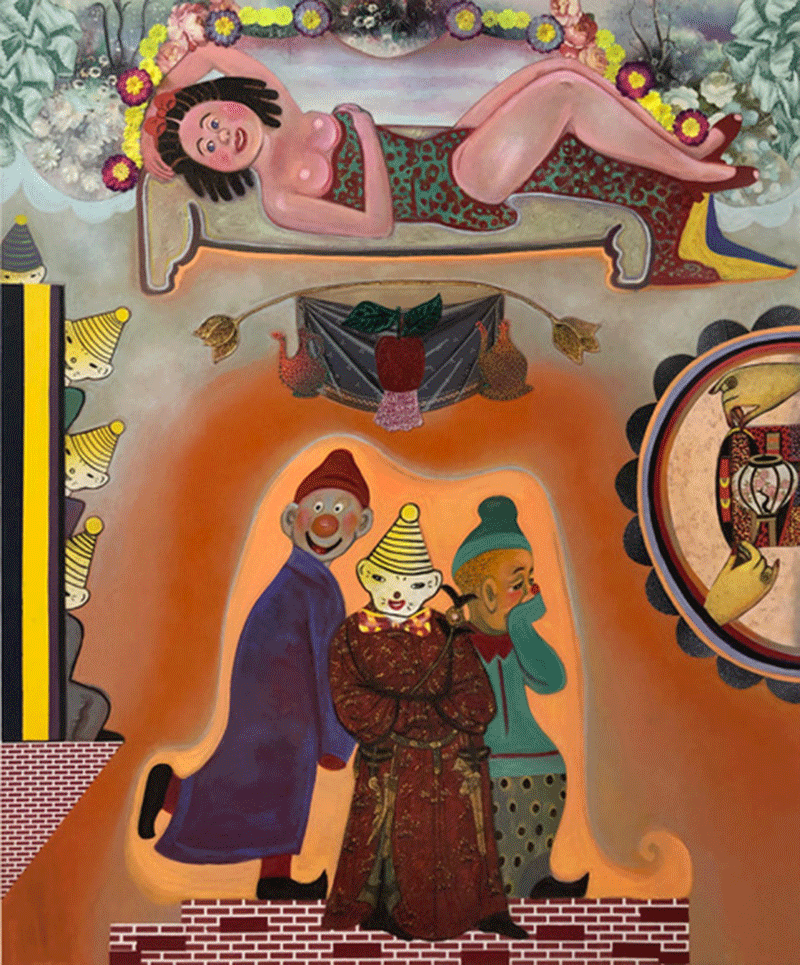
CGN: You have organized an exhibition at the Elmhurst Art Museum called What Came After that opens this September. In addition to your own work, the exhibition will include Nicolas Africano, Susanne Doremus, Eleanor Spiess-Ferris, Richard Hull, Michiko Itatani, Paul Lamantia, Robert Lostutter, Jim Lutes, Tony Phillips, David Sharpe, Hollis Sigler, Ken Warneke, Margaret Wharton, and Mary Lou Zelazny. As an artist, why is this exhibition important to you, and what do you hope to achieve by bringing this large group of painters together?
PB: The idea for this exhibition started when I began to notice that the Hairy Who, as a group, was getting a lot of well-deserved notice. Attention then spread to the Imagists, because in some articles and exhibitions, I would be mentioned as an Imagist, along with artists such as Robert Lostutter, Richard Hull and Paul Lamantia. However, while there was this intermingling of terms, which I willingly accept, there was another group of artists from essentially 1978–1998, sometimes referenced as the “Chicago School” that was part of the Chicago art scene as well. One of their main champions was the art writer and critic James Yood. He loved the figure and all of its modifications, making him an advocate of this period. When I decided to organize this exhibition, I immediately called Yood asking if he would co-curate and write an essay for the program guide and catalog. It was very sad for me when he passed away [in April 2018], because I will always wonder what the show would have looked like if he had been a part of it. Thus, the exhibition, program guide and catalog are in memory of Yood. The purpose of the show is not to downplay the importance of the Hairy Who or the Imagists (some of the artists in this exhibition take on the mantle of Imagist), but rather to point out that there was a group of artists that made up an informal collective of like-minded painters.
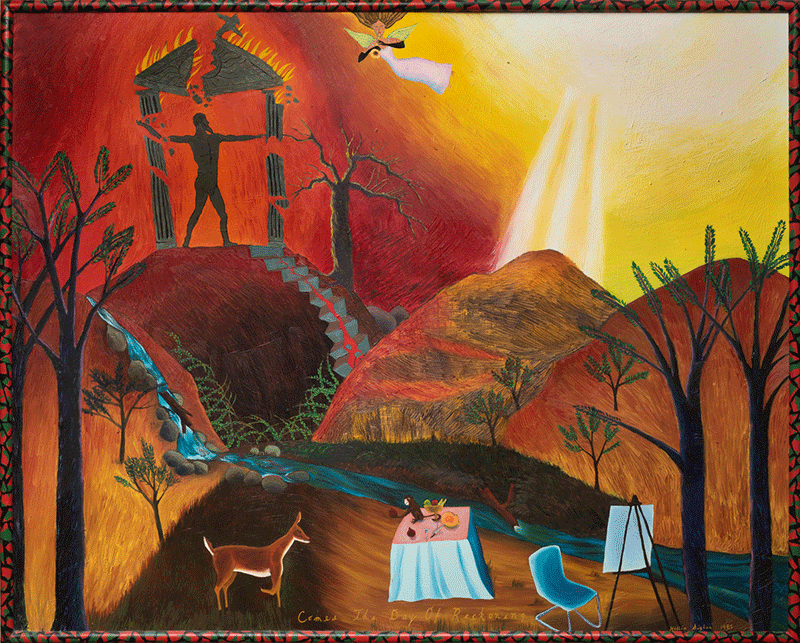
CGN: How did your friend and colleague Jim Yood influence your art practice?
PB: He was a friend, but more so he was an ally who completely supported my work. He wrote articles that helped me place language with what I was painting.
I wasn’t the only one he supported. During the eighties and nineties, he was a big supporter of many others who worked figuratively, particularly in the Midwest. That admiration was manifested in exhibitions that he curated, reviews he wrote for national publications and in his public lectures. He genuinely loved the eccentric figure and a kind of iconographic irreverence.
CGN: How would you define Chicago Imagism?
PB: I think Chicago Imagism carried on the tradition of the marriage between fantasy, funk and surrealism—a desire to delve into a unique narrative style using intense color and stage like theatrical representations and quirkiness.The problem, it seems to me, is that there are the original Imagists, but now that label can often apply to anyone using the figure in an eccentric and constructed narrative manner. I have often joked with others, “Imagism, the term that ate Chicago art!”
CGN: Can you tell me about your upcoming exhibitions at both Zolla/Lieberman Gallery and The Suburban?
PB: The Zolla/Lieberman exhibition is the result of the show that I have organized at Elmhurst Art Museum. I hope the Elmhurst show has some sort of impact on public awareness of my art and its context from another time. It made sense to simultaneously have a show of newer work at Zolla/Lieberman, since they represent me; even though the paintings in that exhibition have gone through significant changes since the Elmhurst Art Museum exhibition.
Then Michelle Grabner asked if I wanted to show at The Suburban in Milwaukee, with Matt Morris. It was a total surprise, because my work is quite different from art one might see there. While Matt’s and my work is visually very different, I can see why we were put together. We both deal with an eccentric view of romanticism and high kitsch. It’s amazing all three exhibitions are opening this September!
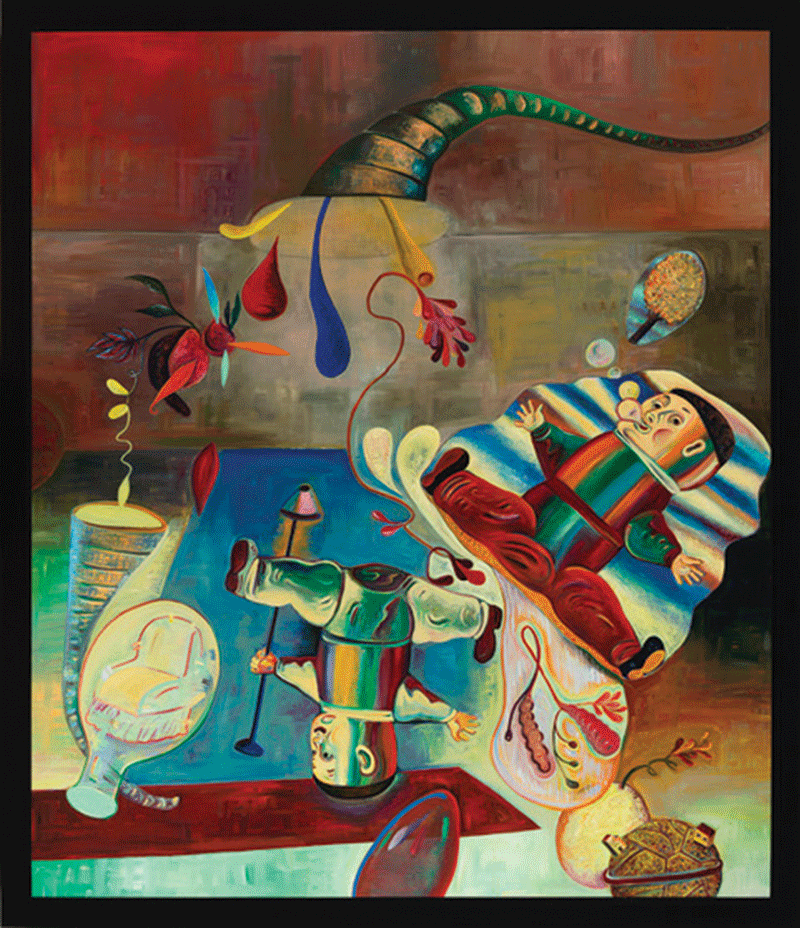
CGN: Many different kinds of characters appear in your paintings. Do you work with a cast of characters, or do you invent new personalities for each painting?
PB: It often does feel like I have a cast of characters, but I don’t always look at it that way. Recently during a studio visit a curator mentioned that all of my figures’ faces looked alike, they all shared the same smile. What I should have mentioned to her is that I am very interested in older Chinese propaganda posters where everyone – the farmworkers, the peasants – shares the same smile. It is a false face, as their lives were so conflicted. In my paintings the smiles are presented in the same way. There is such difficulty in the world, and my figures represent that same smile as the painted figures in the posters, implying that all is well and good…when it isn’t!
CGN: You have called yourself a tourist, but would you go further and define yourself as a voyeur?
PB: The term voyeur is probably more appropriate because I am that way in life. I look and look and look at people. I try to figure out what they are thinking, and when they are with another person, what is that relationship about? I find myself constructing narratives about their lives, it is almost as if I am spying on people and placing an invented narrative onto them. Sometimes the strangeness of all those bodies honestly frightens me.
CGN: You use various techniques like collage, painting, and assemblage in your work. Which one are you most interested in at the moment?
PB: At the moment, I would like to reduce the amount of collage and concentrate more on paint, how it looks, and how it can be manipulated. I say that as I start a new body of work, but collaging might annoyingly push itself forward once again.
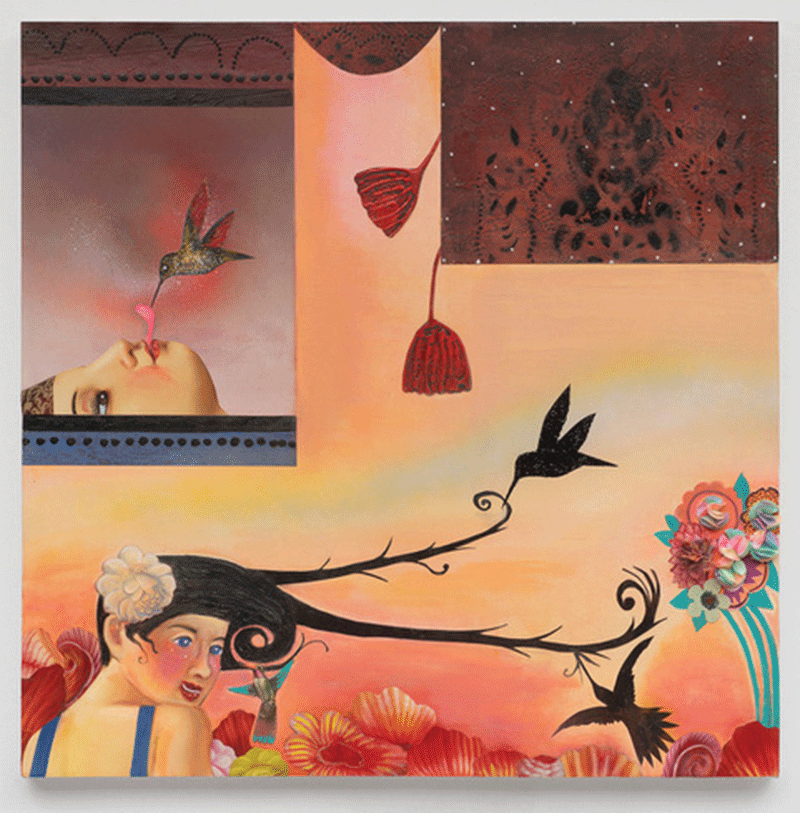
CGN: How do you define success as an artist?
PB: That’s so complicated. First of all, I want my work to mean something to myself and those around me. I want to be good – beyond good. I think no matter what an artist states, most would want at least a taste of a high-end career. How many artists get such status? In the long run, you probably shouldn’t base your career on much more than the love of a studio practice and most importantly the grit of it all, because you will eventually either give up or become a very bitter artist.
CGN: Do you have a favorite gallery or museum in Chicago?
PB: I am not going to answer that. But I will tell you that one of my favorite artists in Chicago was the late Henry Darger. And I will mention galleries that no longer exist but had a strong influence on me when I was younger. They were Frumkin Gallery, Dart Gallery (which represented me) and the Phyllis Kind Gallery (who also represented me). To their credit, there are many, many galleries existing today in Chicago that show artists whose work makes me envious as hell! Seeing such an exhibition sends me sulking back to my studio…I better get better!






